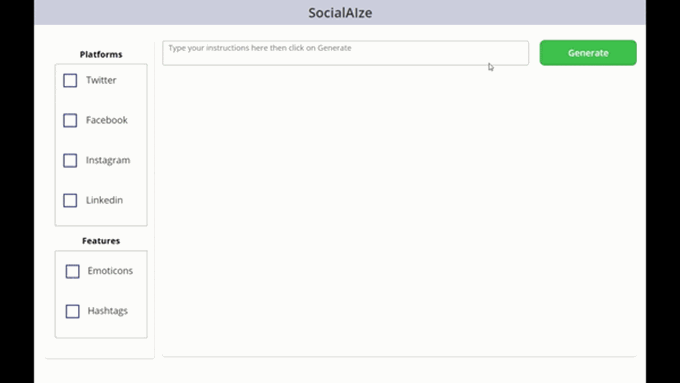Microsoft’s Power Platform is a well-known no-code development platform. Not many may know that Power Apps was one of the first products to use GPT in a commercial capacity. It is, the way we see it, the most AI-powered no-code platform in the world today.

Image: Microsoft
By itself, a low-code platform makes it easy for anyone, regardless of their technical skills, to turn their ideas into reality. Adding AI lowers the bar even further. On one hand, it makes low code even more accessible. Copilots bring AI-powered assistance into Power Apps, Power Virtual Agents, and Power Automate. On the other hand, it removes the limitations of your imagination by enabling low-code developers to harness the power of Generative AI.
Microsoft’s Azure OpenAI offers users access to industry-leading Large Language Models (LLM) and the ability to build Gen AI applications. This offering can be integrated into a tool like Power Apps, leading to benefits such as:
• A user-friendly interface that is web and mobile compatible.
• The ability to save valuable time and effort.
• Enhanced productivity by eliminating repetitive tasks.
• Making data-driven decisions.
Bringing Azure Open AI into PowerApps
One way to integrate Azure OpenAI’s advanced language models and algorithms into the dynamic framework of Power Apps is through custom connectors. This integration allows users to harness the transformative potential of AI in creating compelling and personalized user experiences.
The integration process relies on prompt engineering techniques to ensure meaningful and relevant responses. By carefully crafting and combining the user's input with backend prompts, the AI-generated content aligns with the user's needs and intentions. This streamlined approach enables users to interact with AI-generated outputs within Power Apps, unlocking a world of possibilities for enhanced productivity and tailored solutions.
Key steps in the integration process include:
- Elaborate prompt engineering techniques used to carefully craft and package the backend system prompt along with the user prompt.
- The packaged prompt is sent to Azure OpenAI via a Power Apps custom connector to generate contextually relevant responses aligned with the user's intent and requirements.
- The custom connector is also responsible for receiving the response from Azure OpenAI, making it accessible for further manipulation.
- A custom method is employed to retrieve and structure the response from the custom connector.
- The structured response is then integrated into the app's user interface, enabling users to interact with the generated output and customize it further to suit their specific needs.

By combining custom connectors, prompt engineering, and a custom response retrieval method, Power Apps empowers users to create intelligent and interactive applications. Furthermore, businesses can leverage the power of AI to generate dynamic content, enhance user experiences, and deliver personalized solutions that truly resonate with their users.
Azure Open AI in Power Apps: Potential Use Cases
The integration of Azure OpenAI within Power Apps opens up several possibilities for various business applications.
• Business Process Automation: Power Apps can automate repetitive tasks and streamline business processes with the help of generative AI.
• Intelligent Data Insights: Utilize Azure OpenAI's advanced analytics capabilities in Power Apps to gain actionable insights from large datasets.
• Natural Language Interfaces: Incorporate Azure OpenAI's natural language processing capabilities into Power Apps to create conversational interfaces and chatbots.
• Intelligent Search and Discovery: Enhance search functionality in Power Apps using Azure OpenAI's powerful search capabilities.
• Personalized Customer Experiences: Leverage Azure OpenAI in Power Apps to deliver personalized recommendations, content, and experiences to customers.
We recently developed a Proof of Concept (POC) that demonstrates these advanced language and content generation capabilities of Azure Open AI to create tailored experiences. Allow us to introduce SocialAIze.
GPT4 + PowerApps: SocialAIze
Social media has become an essential platform for self-expression and connection. However, creating engaging and impactful content can be a daunting task for many individuals. The process of brainstorming ideas and composing captivating posts can feel overwhelming, especially for those looking to make their voices heard in the crowded digital space. Content generation for social media needs to be a tailored experience. This is why we built SocialAIze. Leveraging the power of Azure OpenAI and PowerApps, SociaAIze simplifies and accelerates social media content generation.
The tool can adapt to the posting restrictions of each social media platform. Whether you're crafting a concise tweet or composing a comprehensive blog post, SocialAIze tailors the generated content to meet the specific requirements of each platform. For instance, SocialAIze ensures that the content generated respects the character limitations of a platform like Twitter, enabling you to effectively convey your message within the given constraints. Likewise, SocialAIze can deliver engaging content with a professional tone for a platform like LinkedIn. Read on to understand how it works.
The application allows you to provide your instruction in natural language. It also lets you select your desired social media platform and indicate the need for additional elements like emoticons and hashtags.
Once you've submitted your inputs, SocialAIze sends a comprehensive prompt, with all relevant instructions, including the user’s inputs, to Azure OpenAI. Here, advanced algorithms and Large Language Models come into play. Drawing from vast data sources, Azure OpenAI generates personalized social media content that perfectly aligns with your instructions. Users can further engage with the generated output and fine-tune it to suit their specific audience and social media goals.
Summary
Generative AI, driven by advanced algorithms and language models, is transforming the business landscape by harnessing the transformative potential of artificial intelligence. With this innovative technology, companies can generate contextually relevant and insightful content, revolutionizing how they engage with their audience and build brand loyalty. By leveraging the power of AI-driven content generation, organizations unlock unprecedented levels of creativity, efficiency, and innovation, positioning themselves at the forefront of their respective industries. And low-code platforms only accelerate the process.
We built SociaAIze in just a couple of hours, and we realize that we’re only scratching the surface in terms of what’s possible. In the next phase, we plan on integrating with the social media APIs to allow users to directly publish from SocialAIze, enabling them to provide inputs on tone/mood and even learn from existing content styles.
If you’d like to learn more about our AI generated social media content app or how we can help your organization integrate the capabilities of AI Large Language Models into Power Apps, reach out to us at marketing.valorem@reply.com.
